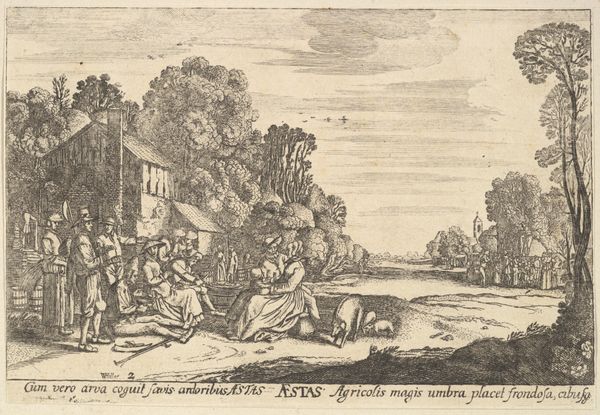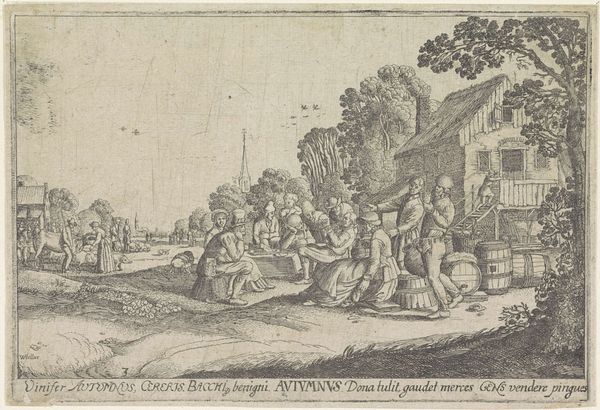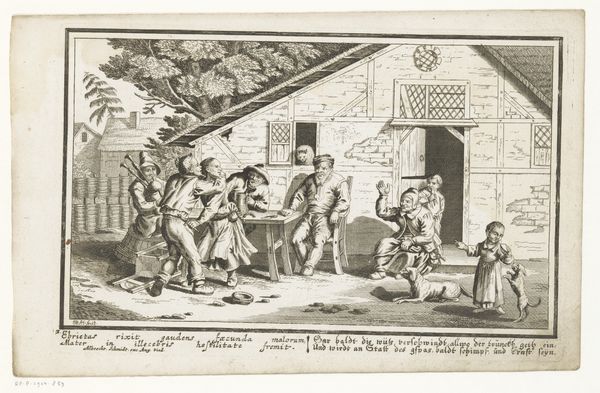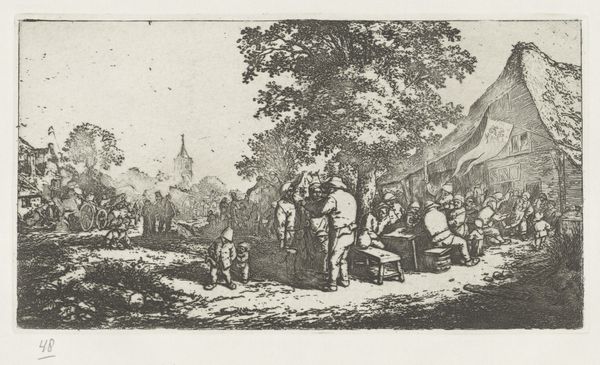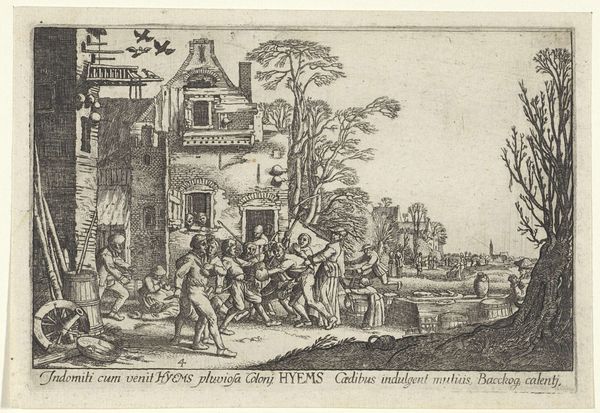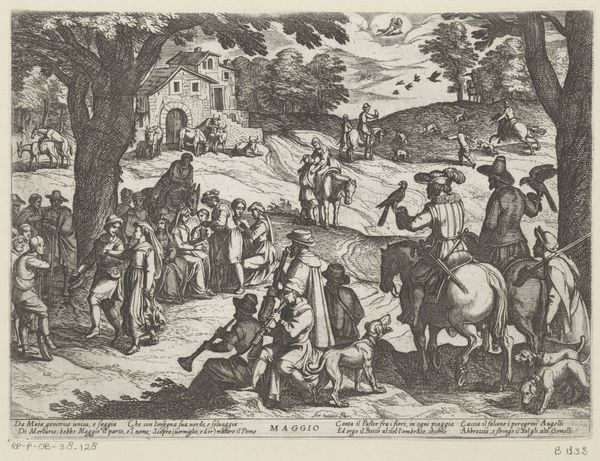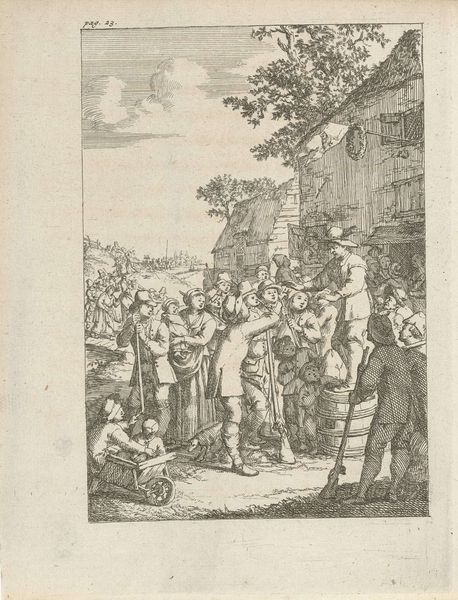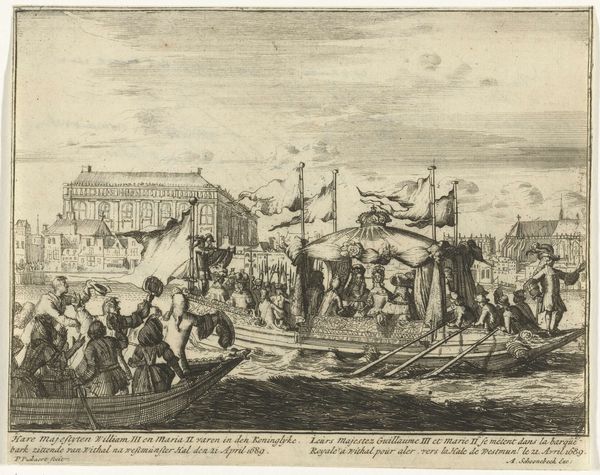
drawing, print, ink, engraving
#
drawing
#
narrative-art
#
baroque
# print
#
landscape
#
house
#
figuration
#
ink
#
men
#
genre-painting
#
engraving
Dimensions: Sheet: 4 1/16 × 6 1/16 in. (10.3 × 15.4 cm)
Copyright: Public Domain
Curator: This engraving, titled "Autumn (Autumness)" by Wenceslaus Hollar, completed in 1629, presents a fascinating tableau of 17th-century life, currently residing at The Metropolitan Museum of Art. Editor: My immediate thought is the labor. The composition, built of delicate ink lines, appears to depict both leisurely gathering and a more industrious toil simultaneously. Curator: Indeed. Hollar's meticulous detail captures a moment steeped in allegorical and cultural significance. Note the prominent figure of Bacchus, or someone certainly embodying his spirit. Surrounded by figures indulging, the etching feels celebratory of abundance, a classic vanitas. Editor: Looking at the foreground, I am drawn to those barrels and figures near them. One can easily surmise wine is central to the material reality on display—its production, its distribution, its enjoyment. Look at the varying clothes, that denote wealth distribution here. Curator: And see how he weaves a narrative around the act of feasting itself? It's a commentary, isn't it, on prosperity but also on the transience of earthly delights, heightened with the approach of Autumn which signals the end of harvest. Editor: I am just drawn to how Hollar conveys that in an easily reproducible engraving that also is, at the base of it, a record of that era's processes, of social and economic patterns emerging, of the labor involved, even when focused on revelry. How was it circulated? Who consumed the images and what effect did they have? Curator: It certainly prompts contemplation about cultural memory encoded within genre scenes. The symbols employed connect with archetypes stretching back centuries, providing insights into societal norms and seasonal ritual celebration and fear of the "lean months". Editor: I find my mind pivoting toward those questions about accessibility that prints pose, in particular, even when gazing at figures embodying familiar symbols of leisure, I’m looking closer at how they obtained that leisure, the labor implied, and what social stratum can access the image. Curator: Ultimately, I think Hollar achieves something beautiful, blending everyday scenes with allegorical richness, encouraging endless layers of interpretive reading. Editor: Agreed. For me, I'm left contemplating art's essential tie to the tangible conditions of its making, the processes depicted, and its audience consumption over centuries.
Comments
No comments
Be the first to comment and join the conversation on the ultimate creative platform.
